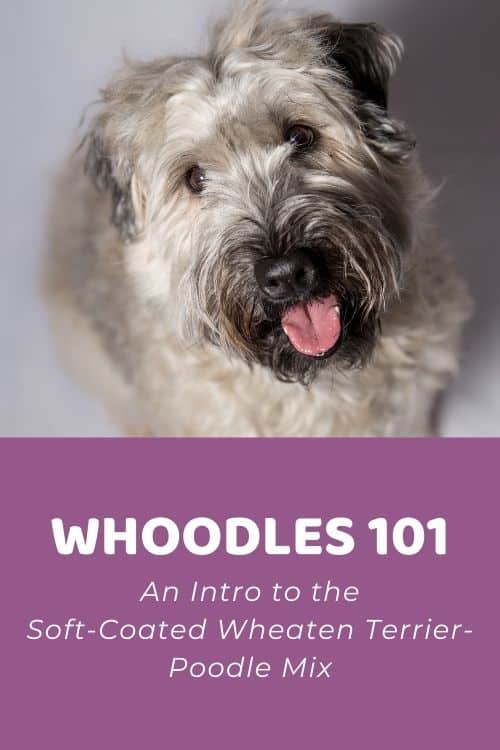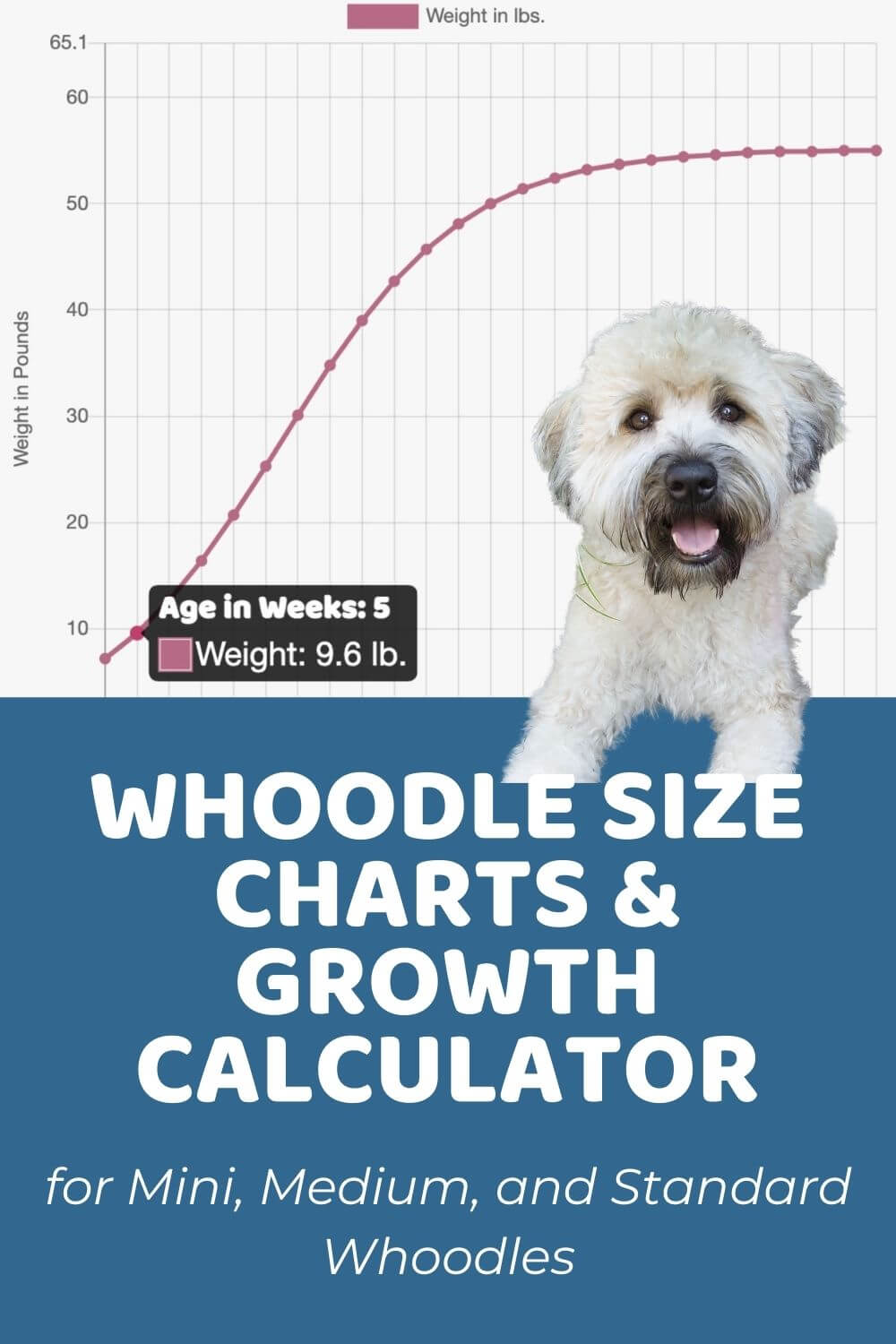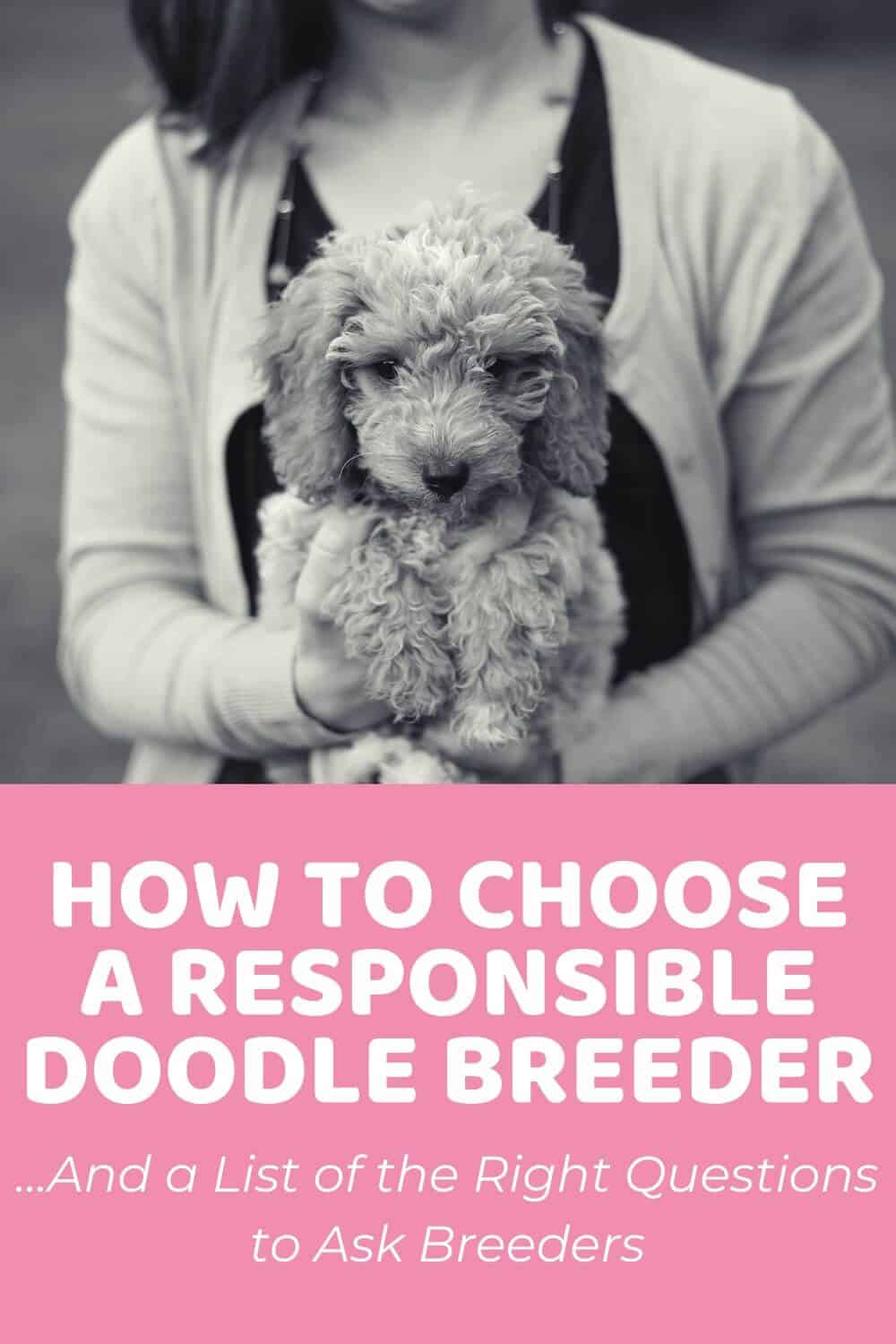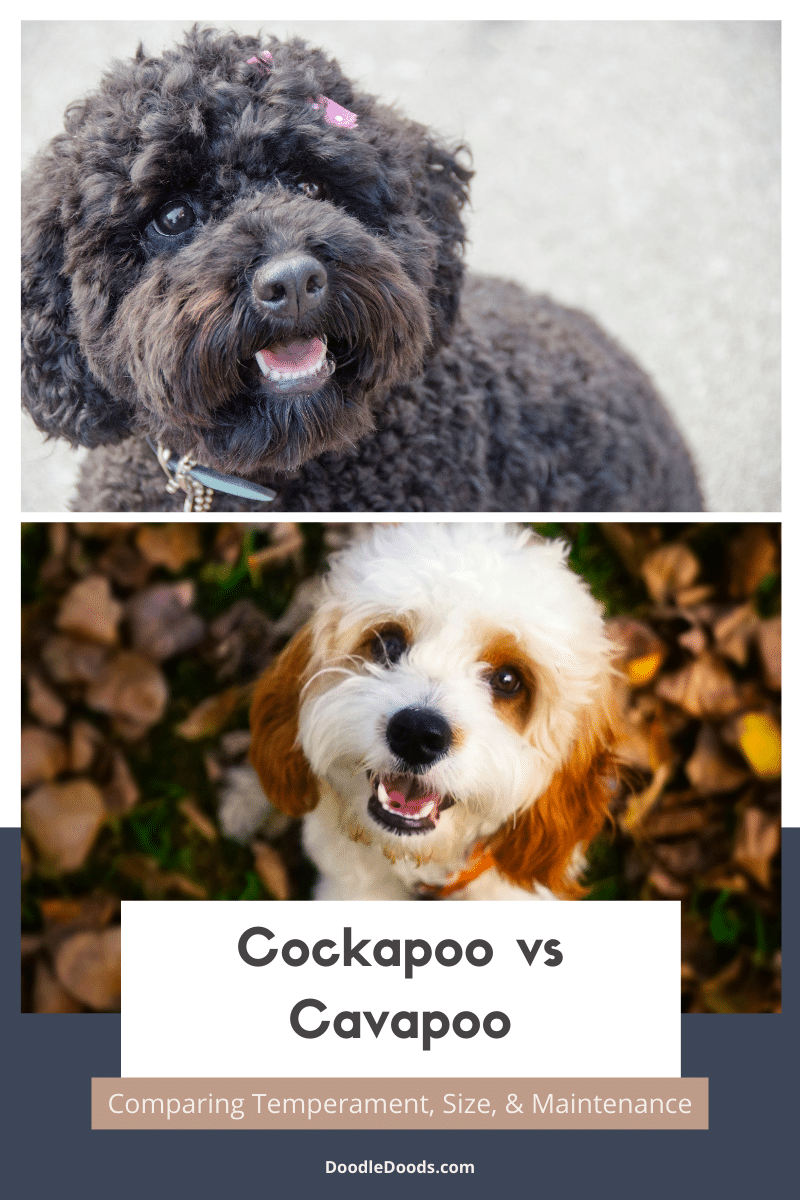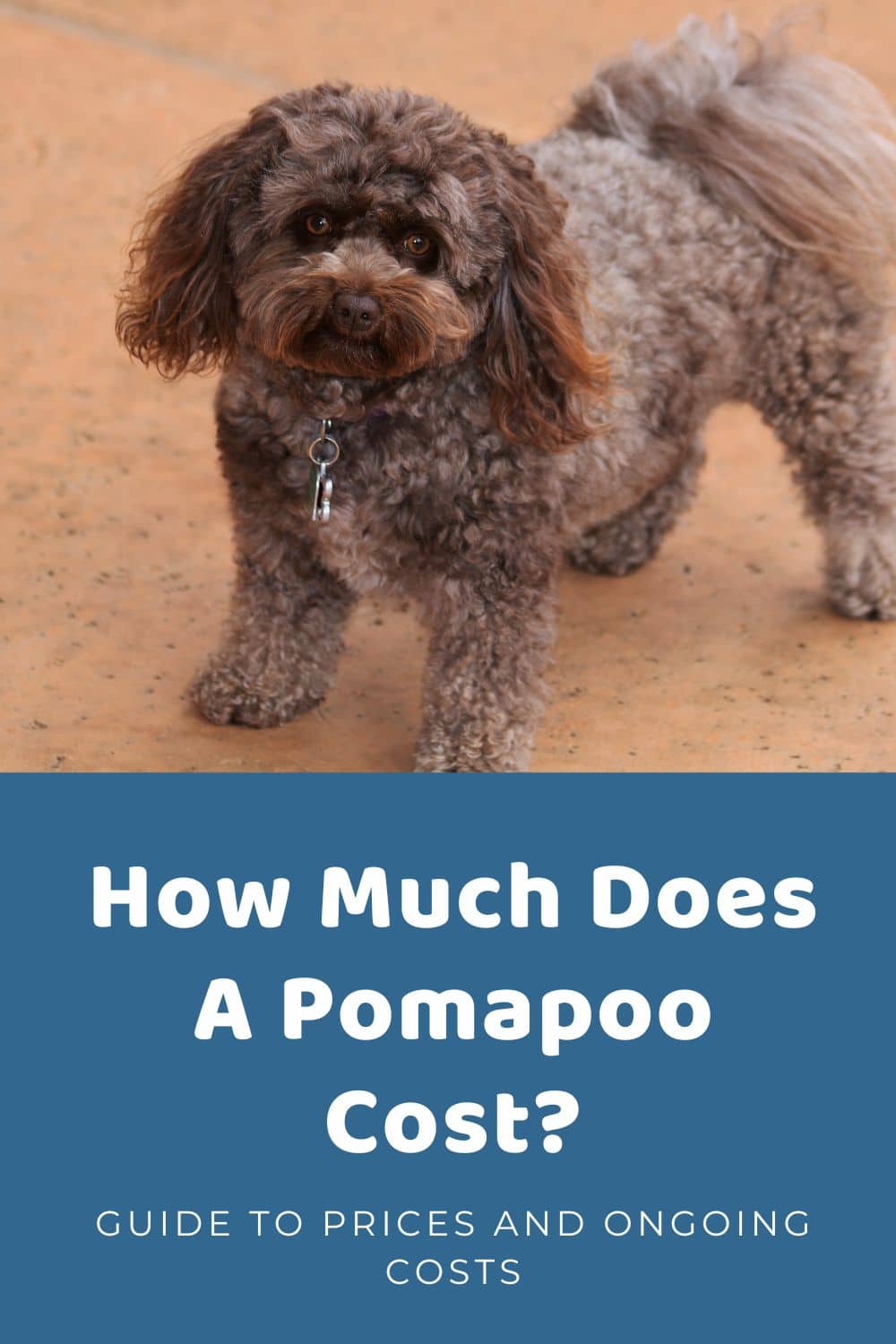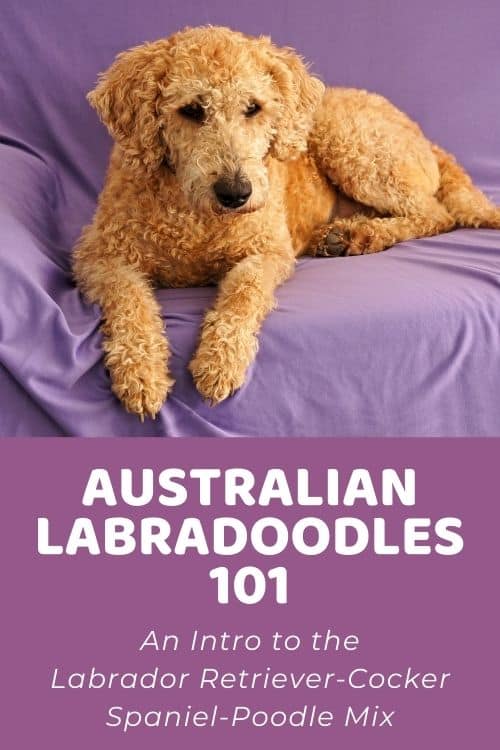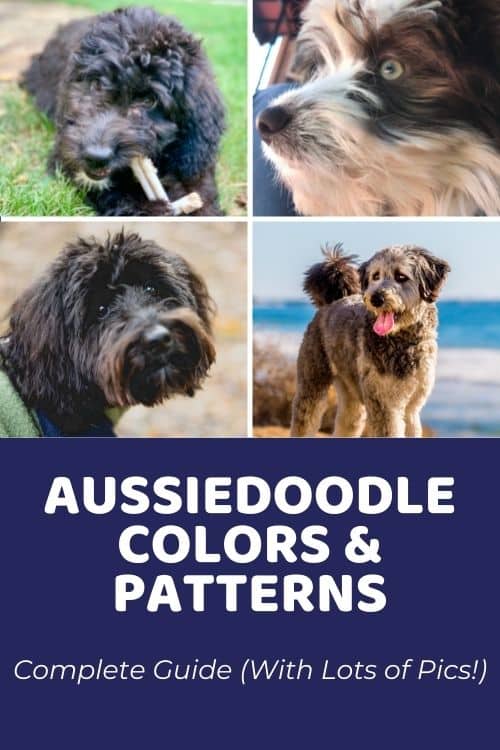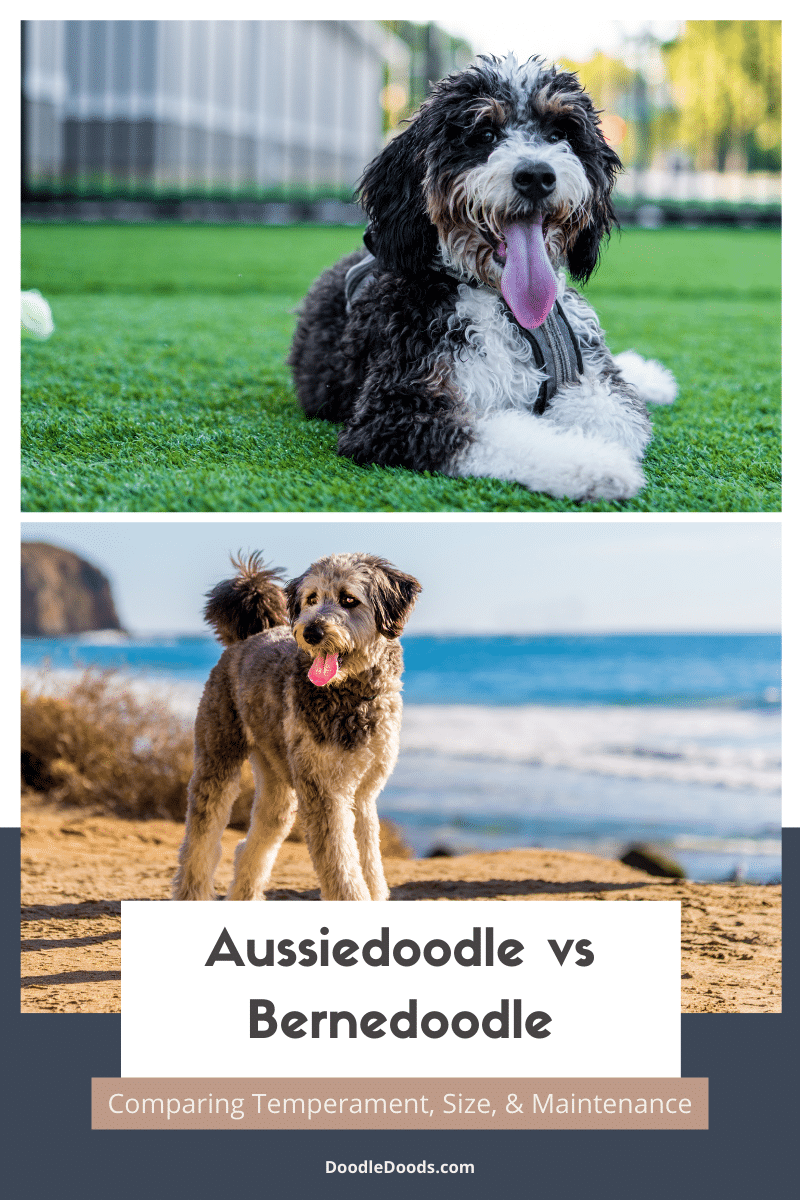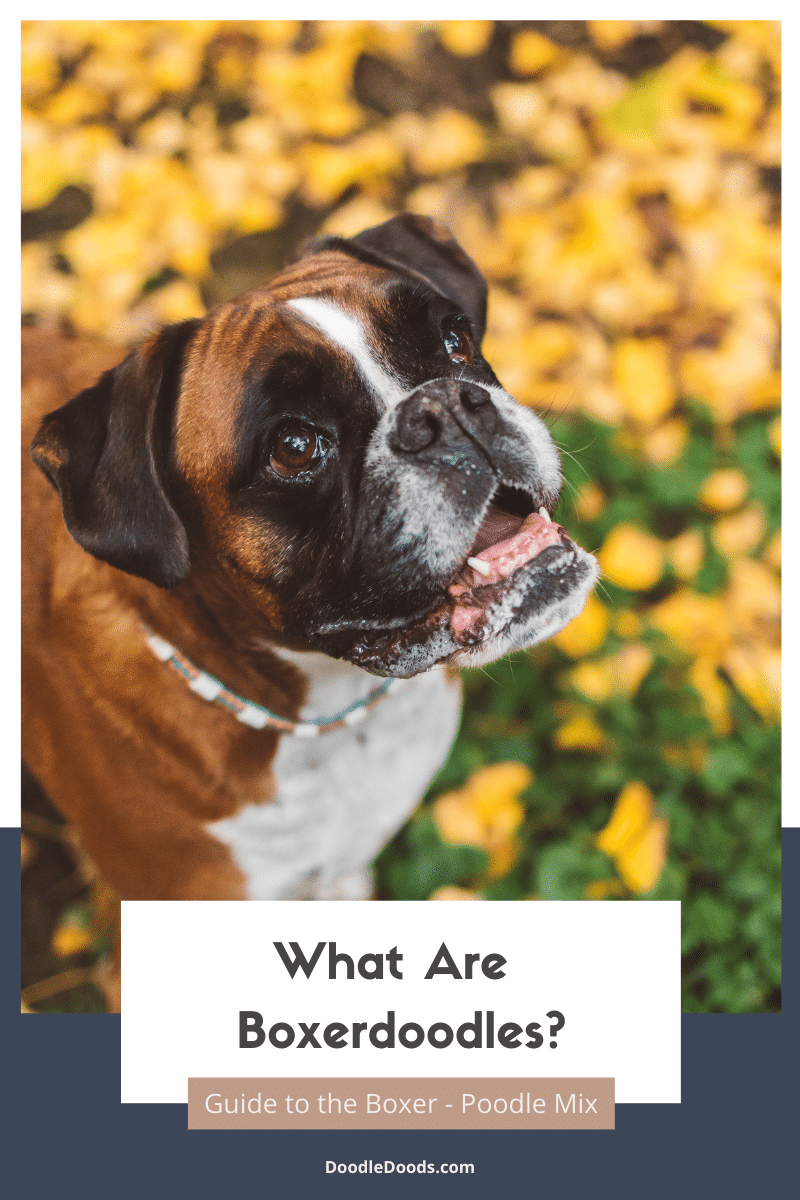Aside from having personalities as unique as their owners, Doodles also inherit some pretty cool features from their non-Poodle parents (that’s why these dogs were picked for “Doodling” in the first place). Here we are going to chat about the Whoodle’s unique qualities and how they differ from other Doodles in the hopes of helping you decide if they are the right dog for you.
Learn How to Care for Your Doodle Puppy!

Perfect for first-time Doodle parents, get ALL your questions answered, including questions new Doodle parents don’t even think to ask.
Plus, get $700 worth of Bonus Materials for FREE, including:- Doodle Parenthood Community and Support Group ($190 value)
- Doodle Puppy Growth Tracker ($20 value)
- EMERGENCY Cheatsheet: When To Call The Vet Immediately ($50 value)
- HELP! Button ($145 value)
- And SO MUCH MORE!
What Exactly is a Whoodle?
Doodles are becoming THE pets of choice for a variety of reasons, including their hypoallergenic hair, gorgeous teddy bear features, and happy, playful natures. Their Poodle heritage means they are super intelligent, as Poodles are one of the smartest breeds out there. Yet these darling dogs are a loooong way from being all the same.
While not as well-known as their Labradoodle or Goldendoodle cousins, Whoodles are still big in the Doodle universe. They are a beautiful mix of the Soft-Coated Wheaten Terrier and the Poodle. These darling dogs are otherwise known as Wheatendoodles, Wheatenpoos, Sweatendoodles, and Sweatenpoos.
Whoodles have been purposefully bred since around the mid-1990s, making them fairly established. Although, not much is known about why they were initially combined. It might have something to do with the Wheaten’s cute face and gorgeous plush-soft fur, or the more general popularity of Terriers.
However, we do know a fair bit more about the Soft-Coated Wheaten Terrier, a dog that was (and still is) incredibly popular in Ireland. Here they were bred as all-around farm dogs, tackling everything from herding to ratting, guarding, hunting, and retrieving. This versatility makes these dogs excellent at a number of different canine job roles, not to mention sports.
Poodles, on the other hand, as you may already know, were designed as retrievers, particularly water retrievers. It often comes as a bit of surprise to many people the first time they hear that the glamorous Poodle was once (and in many cases still is) a working dog. However, those super fancy-looking Poodle cuts served a practical purpose. They kept the vital parts warm while the dogs were collecting waterfowl, while stopping them from getting weighed down and waterlogged by all that thick, woolen hair.
3 Interesting Facts About Soft-Coated Wheaten Terrier-Poodle Mixes
- Despite the Poodle love of water and the fact that Wheaten’s originate from Ireland, most Whoodles don’t really like the rain (or the heat).
- Whoodles are both super independent (like a Terrier) and super family-oriented (like a Poodle).
- With all those Poodle smarts and Wheaten versatility, Whoodles can be trained to do just about anything (within reason).
Physical Appearance
When it comes to appearance, nothing is ever guaranteed with mixed dogs, no matter what some breeders say. Genes are mysterious things, and even with large amounts of Poodle DNA, Whoodles can still come out looking more Wheaten (which doesn’t sound like a bad thing to us!)
Soft-Coated Wheatens are generally shades of beige, fawn, cream, and gold, while Poodles come in numerous colors. For this reason, Whoodles, while mostly on the brown spectrum, can also be black, red, silver, grey, and cream. They are often just a single color, although later generations (see below for more details on that) can be spotted or have “accents” of white.
In terms of their physique, Whoodles tend to be quite robust, with strong, long legs and broad shoulders. They have the Doodle trademark floppy ears and cute-as-a-button face. They also tend to have medium-length, silky coats that can either have a bit of wave or a lot of curl.
Size
Soft-Coated Wheaten Terriers are medium-sized dogs, but Poodles come in three different sizes. Any can be used in breeding. For this reason, there are three distinct types of Whoodle; Standard, Medium, and Mini.
Standard Whoodles are the largest at 18 to 20 inches to the shoulder and weighing around 35-50 pounds. Medium Whoodles are slightly smaller, 14 to 16 inches and 25 to 35 pounds. Mini Whoodles are the smallest at 10 to 12 inches and 15 to 25 pounds.
While this is true for most first-generation Whoodles (see below for an explanation of this), with later generation dogs, there can be multiple Poodles in the mix. This makes things a little less clear-cut. Although most Whoodles will fall somewhere within these parameters.
For more on Whoodle size and growth rates, and with help calculating your pup’s potential future size, check out our article here.
Personality & Temperament
Probably one of the most important things to know about these fun pups is that they have a ton – no really – A TON of energy. Whoodle owners most often describe them as being super affectionate but also massively enthusiastic. That is definitely something you will need to keep in mind when deciding whether one of these darling dogs is suitable for you. If you don’t like a dog who wants to climb all over you, then a Whoodle might not be right for you.
On the other hand, if you love to get out and about among nature, then the Whoodle may just be perfect for you. These dogs love to walk, and, moreover, their adventurous, inquisitive Terrier nature makes them great fun to hike with. If you live by plenty of open countryside, woods, beaches, etc., both of you will have a great time.
Another important consideration is the fact that Whoodles are very social dogs and can suffer from separation anxiety if they are left by themselves for too long or too often. These dogs crave company, attention, affection, and plenty of play. They want to be everybody’s friend. All this means that they are very family-friendly pups; they are great with kids and good with other dogs, too.
Variations & Generations
As covered above, there are three distinct sizes of Whoodle. These are typically based on first-generation, purebred parent pairings where the size of the Poodle is known.
However, breeders are now also pairing Whoodles with Whoodles and Whoodles with Poodles. This, aside from sounding very much like something Dr. Seuss might write about, is done to further prompt the development of specific desirable physical and behavioral characteristics. For instance, more Poodle genes make it more likely that puppies will inherit that much wanted hypoallergenic coat.
Current pairing possibilities include:
| 1st Parent | 2nd Parent | % Soft-Coated Wheaten Terrier* | % Poodle* | |
| F1 Whoodle (first-generation) | Soft-Coated Wheaten Terrier | Poodle | 50% | 50% |
| F1B Whoodle (first-generation backcross) | F1 Whoodle | Poodle | 25% | 75% |
| F1BB Whoodle (first-generation backcross backcross) | F1B Whoodle | Poodle | 12.5% | 87.5% |
| F2 Whoodle (second-generation) | F1 Whoodle | F1 Whoodle | 50% | 50% |
| F2B Whoodle (second-generation backcross) | F1 Whoodle | F1B Whoodle | 37.5% | 62.5% |
| F2B Whoodle (alternate cross) | F2 Whoodle | Poodle | 25% | 75% |
| F3 / Multigen Whoodle | F1B Whoodle or higher | F1B Whoodle or higher | Varies | Varies |

Health
Doodles as mixed breed dogs tend to be a lot healthier than pedigree ones. This is because of the wider gene pool, which makes genetic issues less common. Another great thing about these dogs is that there are numerous responsible breeders committed to creating the healthiest pups around. (We’ll point you in the right direction with this towards the end of this article.)
However, while Doodles may be less susceptible to canine illnesses, they can’t be ruled out altogether. These dogs can inherit problems from both parent breeds. From the Poodle, they can get hip dysplasia, Addison’s disease (a hormone disorder), and eye problems. From the Wheaten, protein-losing nephropathy (a kidney ailment) and protein-losing enteropathy (loss of proteins from the bloodstream) are both possible.
Generally speaking, though, Whoodles do very well with an average lifespan of between 12 to 15 years. As is true for all dogs, smaller ones tend to outlive bigger ones. However, with the proper care and attention, Whoodles of all sizes will remain fit, healthy, and youthful throughout their entire lives.
Exercise & Training
As covered above, the Whoodle’s boundless energy is perhaps their singularly most defining feature. They could, in theory, make good apartment dogs just as long as their daily exercise needs are well met. They need to walk at least a mile, if not more every single day.
With regards to training, like all Doodles, Whoodles tend to be highly clever pups, which definitely helps. However, they can also inherit the Wheaten’s stubborn will and desire for independence, making these dogs a little more challenging for first-time owners.
Strong and confident, Whoodles have many leadership qualities that could make them tougher to train than, say, a people-pleasing Goldendoodle. They will likely think that they know best, and they definitely don’t like being yelled at. However, they do need to know who’s the boss right from the very start of the relationship.
Positive reinforcement works well with these dogs, as does training with patience, kindness, confidence, and consistency. For more details on this praise over punishment approach and how to utilize it to best effect, check out Baxter and Bella’s Online Puppy School.
Need help with training?

Use our discount code: DOODLEDOODS at checkout for an instant 25% off of BAXTER & BELLA, The Online Puppy School – an incredible value on their lifetime membership!
Learn More About BAXTER & BELLAAnother thing that can make these pooches a little trickier to manage is their highly developed prey drive. This makes them more likely to chase smaller animals, including pet cats, rabbits, etc. It can also heighten the risks of them running away when off the leash if they spot a mouse or squirrel, for instance. Great care is needed when socializing these dogs into a household that already has pets.
Coat & Grooming
Both Wheatens and Poodles have reasonably similar single-layered, hypoallergenic coats. This makes it easier to know exactly what you are getting. However, while the Poodle’s hair is more on the woolly, curly side, the Wheaten’s is longer, silkier, and much straighter.
While Whoodles can inherit either of their parent breed’s hair, most commonly, they get a wavy mix of the two. This medium-length, touchably soft coat is probably one of the things that makes them so popular. Yet, it needs daily attention to keep it in the best shape.
A very soft coat is already prone to tangles. Add in the Poodle curls and an active, outdoor lifestyle, and things could go really wrong really fast. Dirt, branches, and everything else can easily get caught up in their hair leading to big problems if not dealt with immediately.
Moreover, so-called no-shed coats really just aren’t. Instead of hair dying and dropping to the ground, it gets caught up in healthy hair. This can cause knots, tangles, and eventually matting which is all but impossible to remove with a brush – especially if it gets wet.
Experts recommend regular coat trimming and professional grooming with these dogs to keep things manageable.
Where Can You Get Whoodle Puppies?
If everything you’ve read until now has convinced you that you simply have to have one of these gorgeous dogs, the next thing you’re going to have to do is track down a reputable breeder. As Doodles are quite big money as far as dogs go, there are many ways you could get caught out.
Make sure you carefully check certification and ask about the health status of the parents. Pay close attention to any reviews and recommendations. For more advice on precisely what to look for, check out our dedicated article: How to Choose A Responsible Breeder.
Whoodle puppies tend to range in price from $1,000 to $3,000 depending on where you are getting them from, their size, color, and the parent dogs. Grooming, food, and vet costs should also be factored into the equation.
Take a look at our breeder directory for a list of Doodle breeders in your local area.
Frequently Asked Whoodle Questions
Do Whoodles make good pets?
Like all other Doodles, Whoodles have been specifically bred as companion dogs. This means that breeders have aimed to develop certain traits in their puppies that make them super family pets. Whoodles are great for both singles and families. They love children and get along well with other dogs (although perhaps not smaller animals).
Who is a Whoodle best for?
While Whoodles are versatile pups, they are best suited to active owners and families that enjoy spending a lot of time outdoors. Highly sociable dogs, Whoodles don’t do well when left alone. So this might not be the best dog for you if you work long hours or otherwise spend a lot of time away from the house and there is no one else there to take care of your dog.
Whoodles, an adorable cross between Soft-Wheaton Terries and Poodles, make popular pets. They are fun, happy-go-lucky hounds with super soft, plush fur and gorgeous teddy bear looks. Whoodles do well in large families where there are plenty of people willing to take them for their daily walks and to play games with them. If you are thinking about adopting one of these lovely animals, make sure you know exactly what you are in store for. However, if you are fully prepared for an exuberant, fun-loving pup that will adore you, then you’ll never be sorry with a Whoodle.

